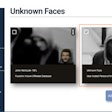The grumpy newsman and the grumpier cop have tangled many times through the decades over what is news and what is interference. While one was digging for news, the other often tried to avoid him.
Yet for the mainstream "old media," the Internet, social media, instant communications and smartphone technologies, have changed the world dramatically in the past several years. In fact, the change has been so fast, many are still reeling from the shock.
Meanwhile, most of law enforcement has watched the information age and rising knowledge-worker revolution as curious observers. We should instead embrace the opportunities these innovations have brought us, and communicate directly with the public. After all, we work for them.
Since the first printing press, the news media has served our nation well, providing information in the greatest spirit of freedom of the press. This Constitutional right has helped our nation to remain open and free, and ensure that those entrusted with authority serve the people who allow them to have that power, or face being removed when the truth is made public.
Yet there are few peace officers who are content with how the news media has often seemingly defined officers, our agencies and our actions. Many a locker room gripe has been heard about the lack of balance of media coverage, and, fair or not, contempt and avoidance has been the officer's routine approach to reporters.
We're in an exciting new age, an amazing era when police agencies can for the first time create their own content and share it directly with the public via Websites, instant messaging (Nixle), and social media (Facebook, Twitter, and YouTube). Few agencies are actively engaged.
It's time to define ourselves directly, instead of being defined by others. Through proactive communications and Public Trust Policing, we can now openly share our core values, and tell of ways we care and try hard to earn and keep the public's trust.
The public wants us to share. They want to hear from us. They have an insatiable appetite for escapist movie and TV cop dramas, but what they really want to hear is the truth from the people they trust — or want to trust even more — their local police.
While policing has professionalized and built trust through the years, the public's perception of the news media has declined significantly. A respected Pew Research study found:
In 2009, 29% of Americans say news organizations generally get the facts straight, while 63% say that news stories are often inaccurate.
In 1985, 55% said news stories were accurate while 34% said they were inaccurate.
As communications technologies have changed at a breathless pace, the news media industry is struggling to find its footing. Even the mainstream media has become more infotainment and has laid off a dramatic number of journalists in order to compete in the new media market. Old media news sources have lost ground or shut down, as subscribers and consumers now share their time with the Internet and new media. Ad revenue has followed the people as they migrate to the Internet for their news.
The public has embraced these new ways to get and share information, while few are interested in paying for it any more. They don't feel they need to. Over half a billion people around the world use Facebook and Twitter, and that means they aren't reading newspapers and watching TV with that time.
The public wants us to be open and transparent, for us to tell them what we are doing, and how and why we are doing it. They also want to know what they can do to make their lives safer. That includes confidential phone, text and e-mail reporting of crime via LACrimestoppers.
The Web site of the Los Angeles County Sheriff's Department gets nearly 200,000 unique pageviews each month. When the first phase of its re-design began in 2010, the site was modeled after news Web sites, rather than policing sites. Policing Web sites are often stale and have few graphics and talk to themselves using terms such as Field Operations Region III, which makes no sense to the public. Meanwhile, news media Web sites are dynamic and designed for what is of interest to consumers. The fact is, if news Web sites don't perform, they're out of business. We learned from that lesson.
The Nixle instant messaging news and information feed of the LASD Headquarters Newsroom has the highest number of Nixle subscribers in the nation as of January. The list of more than 28,000 unique recipients includes members of the news media. Add to that another 10,000 to 15,000 subscribers at local LASD stations with Nixle feeds and that's a lot of people getting e-mails and text messages from their local cops. It's designed for what the public wants in content, timing, and geo-specific areas.
The increased public use of confidential crime reporting through LACrimestoppers and the increasing use of Twitter and Facebook are part of an overall LASD marketing plan. Strategies have been implemented in phases, especially since early 2009.
Part of the marketing strategy involves improved communications and efficiencies in providing the news media what they need to keep the public informed by providing news releases with the goal of quality, quantity, and timing.
The key difference now is that when content is prepared to give to the news media, we design and deliver it in a way that the public can also directly receive it. The news media is just as important as ever to work with, but by shaping the information differently, it has a far wider reach. Most importantly, even if the news media doesn't use it, our subscribers and Web site visitors still get it.
We are all proud of our respective policing agencies and the contributions our partners make in community safety. In today's era of instant communications, the world has changed for police agencies too, not just the news media.
There is a significant segment of our communities who strongly believe that if we aren't engaged in direct communications with them, then we aren't helping them to keep safe and informed, or are outdated and less effective at policing. Now that these systems exist, the public expects us to use them. The public has sent us a message. It's time to adapt and get busy.
Editor's Note: This blost post initially appeared at ConnectedCOPS.net. Capt. Parker will be presenting at the Social Media Internet Law Enforcement (SMILE) Conference in Chicago from May 9-11.














